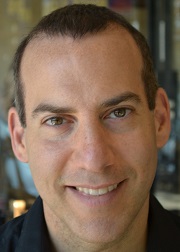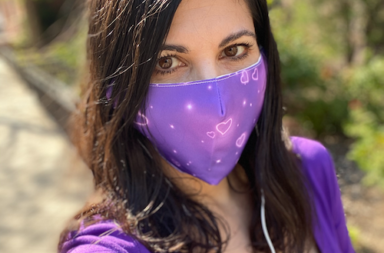Finding Happiness via Social Media Series: Part Two
(Updated April 21, 2019)
We began in Part One with the idea that you can significantly improve your happiness by focusing on gratitude posts.
We identified Facebook as a vehicle for enhancing your appreciation for the minutia of life and your “friends” on FB and in real life.
While your posting behavior on Facebook is not a true reflection of how often you experience gratitude behind the veil of your social media persona, it does offer a good place to start if you’re looking for an unconventional way to find greater happiness.
Using social media to live a happier life is an essential component of the techealthiest lifestyle.
Next we will go over the most important component of the lesson….
GRATITUDE POSTING HABITS: HOW TO BENEFIT FROM REFLECTION ON YOUR WALL
What types of people, places and events are easiest for you to express gratitude about on Facebook?
Is it easiest for you to thank a loved one for a birthday experience? Do you share how thankful you are for what your parent or grandparent has done to contribute to your happiness? Is it a no-brainer to share your appreciation for good food or a beautiful view of nature?
I’ve simplified the process of understanding your thankfulness posting habits by creating five “brands” of thankfulness so you can see where thankfulness comes easy for you and where you struggle.
I use the term ‘brand’ to honor our tendency to promote an image on social media that may deviate from how we think and feel in our private mental world. In the real world, our habits and thought patterns around thankfulness are probably closer to a style than a brand.
If we are totally honest with ourselves, we might conclude that we’re trying to project a certain image on Facebook, even with regard to how we show gratitude. The concept of a brand captures this need to appear a certain way to others.
The great news is that you are still contributing to raising your level of happiness even if you’re pretending to be thankful. You really don’t have to be 100 percent authentic with your thankfulness brand to reap the benefits of posting what you’re grateful for.
Creating a Facebook persona of spiritual superiority, for example, is certainly a lot healthier than an investment in looking like you only take perfect selfies.
So let’s get to the good stuff…
The Five Brands of Thankfulness on Facebook
Begin by identifying which, if any, of the five brands listed below reflects your Facebook posting habits. Note that there’s an incredible amount of overlap among the brands, meaning that you probably show different proportions of some or all of the brands.
If you don’t relate to any of the brands, well….pick one brand and post something ASAP to start building the habit of reflecting on how thankful you are even if you don’t fully feel it with every ounce of your being. Also note that I use the concepts of thankfulness and gratitude interchangeably to simplify this exercise.
1. The Public Kveller
To understand this brand, you have to know what the Yiddish word “kvell” means. (It happens to be my favorite word from any language.) To kvell is to feel extremely proud, but what makes this version of pride unique is that it refers to someone else’s qualities or accomplishments. You are experiencing the greatness of another without requiring recognition even if you play a role in it.
Facebook Habits: In my experience, Public Kvellers on Facebook tend to appreciate and post about the simple things in life. Since public kvelling directs the bulk of attention away from the speaker and toward someone else, public kvellers are often unselfish people who readily celebrate the good fortune of others. They are less threatened than their Facebook friends by posts that typically promote envy. Public Kvellers tend to be parents or pet owners, but not always. Extreme versions of the Public Kveller run the risk of living too vicariously through the lives of other people.
Examples: A kvelling parent would share with her Facebook friends how proud she is of her son who just graduated college with honors. A publicly kvelling dog owner would post pictures of her dog’s funny expressions and poses so others can enjoy them too.
The Social Media Lama says: The experience of kvelling is healthy to the extent that your intention is to direct attention toward someone else while basking in their greatness, as opposed to looking for Facebook friends to give you credit.
Have you kvelled lately?
2. The Reactive Thanker
We all have a Reactive Thanker in us. The question is whether reactive thanking represents your dominant way of expressing gratitude. Reactive Thankers are people who tend not to express gratitude unless something dramatic is given or taken. The Reactive Thanker may begin to live a more spiritually rich lifestyle if a powerful, new experience of gain or loss has inspired him to make more permanent changes in his perspective on life. The hope is that experience leads the Reactive Thanker to expand his range of expressions of gratitude beyond what pertains to just the one life-changing event.
Facebook Habits: Reactive Thankers tend to share thankfulness posts on Facebook in moments of achieving unanticipated, healthy perspective when sudden or unexpected events occur. Expressions of gratitude do not come easy for the Reactive Thanker. It takes a powerful experience to squeeze out a public expression of thankfulness from the Reactive Thanker. In fact, the Reactive Thanker sometimes finds himself annoyed by the thankfulness posts of others. In fact, he may be disgusted by public kvelling. Note that this brand doesn’t refer to people who make a conscious choice to post sparingly about what they are thankful for, but privately expresses gratitude with ease within the minutia of life.
The extreme version of the Reactive Thanker maintains a sense of the world (and his Facebook friends) as owing him something, and with this universal grudge comes unreasonable expectations of other people. These expectations include hoarding “likes” from his Facebook friends when he posts on Facebook, which temporarily determines his self-worth.
Examples: A Reactive Thanker doesn’t think to post how grateful he feels for how he benefited from a small act of kindness from a stranger, but will blow up your Facebook feed for days if someone donates a kidney to his father. (Ok, that’s a bit extreme, but you get the point!) A Reactive Thanker might feel irritated by your post about the amazing anniversary dinner you had with your significant other, but he would expect you to “like” his post about his father.
The Social Media Lama says: People who reserve expressions of gratitude for rare occasions or dramatic events tend to feel threatened and annoyed by the good fortune of others. If you believe that this brand fits your posting habits, consider dabbling in the other four brands to promote easier access to the mental health benefits of gratitude. Once again, the goal is to expand the range of situations in which you feel gratitude and gain a healthier perspective, even if it’s temporary.
3) The Self-Thanker
The Self-Thanker has a habit of publicly thanking people, God, fortuitous circumstances or whatever serves the purpose of making her look good. She may appear to be thankful just like everyone else, offering words of thanks to people who have helped her, but her intention behind the expression of gratitude is quite different than most people. You see the Self-Thanker is really trying to look good to others. In fact, looking good may be of greater importance than making sure someone is appropriately thanked.
Facebook Habits: The Self-Thanker has a knack for appearing like she is perpetually lucky, thriving, and living a celebrity’s lifestyle. Her Facebook feed is saturated with posts in which she always looks perfect. The Self-Thanker probably spent a good amount of time crafting her post to garner the most attention possible. Her posts are less about art and more about maintaining a certain image. Some artists may appear to be Self-Thankers, but the difference is that their primary intention is to create and celebrate art. Self-Thankers tend to expect that you will post your experience of gratitude toward what they’ve done for you. Name-dropping within thankfulness posts is a often a giveaway that the Self-Thanker is flexing her muscles. Some of the most successful people you know fall into this category.
In its extreme form, the Self-Thanker uses Facebook as a way to get as much attention and admiration as possible even at the expense of seeming unfeeling or self-indulgent. Similar to the extreme Reactive Thanker, extreme Self-Thankers also tend to believe that the world owes them something.
Examples: A Self-Thanker would thank Derek Jeter on Facebook for a career of greatness when it’s clear that the purpose of the post is to impress others by having VIP access to the Yankees’ clubhouse. A Self-Thanker would only post appreciative anniversary shots when the purpose is to show how expensive the meal was.
The Social Media Lama Says: Portraying the Self-Thanker in moderation can be extremely healthy if your intention is to learn to celebrate yourself more often or to practice expressing gratitude in a way that makes you look wise or spiritual. Shy or self-deprecating people can benefit from self-thanking Facebook posts since it promotes celebrating your positive traits.
4. The Romantic Thanker
Romantic Thankers frequently express their appreciation for the people they love. They are not afraid to share what they feel and tend to be hyperbolic in their speech. Their hearts are open and they have healthy access to the inner switch that floods them with gratitude. The Romantic Thanker tends to take chances with expressing thankfulness because he has learned that such verbalizations usually lead to benefits within his loving relationships. There are risks involved in being a Romantic Thanker, as some people might experience his thankfulness posts as over the top, sappy, or bragging. In its extreme form, the Romantic Thanker often finds himself celebrating love too soon in his relationships and ends of regretting public declarations of love when a relationship dies young.
Facebook Habits: The Romantic Thanker’s heart swells so large with love that he feels compelled to post. He doesn’t necessarily care that some of his Facebook friends will be rolling their eyes at how over the top his appreciative posts are. The Romantic Thanker tends to post a ton of photos when relationship milestones are reached and looks for other occasions in between to broadcast romantic experiences on your Facebook feed. Thanking others is usually not reserved for only for gifts received, but for all acts of loving kindness.
Examples: In a moment of spontaneous nostalgia, a Romantic Thanker would share photos and appreciative words right from the start of a romantic relationship. A husband would post a long, heartfelt message about his amazement over how amazing a mother his wife is to his children.
The Social Media Lama Says: The Romantic Thanker is not motivated by making other people jealous. Instead, he feels compelled to share with the world how grateful he feels based on how profoundly he is moved by a person, place, or event. Practicing romantic thanking on Facebook is healthy for relationships since it shows vulnerability and it tells the world you are not afraid to reveal the contents of your heart.
5. The Self-Actualized Thanker
The Self-Actualized Thanker has the knowledge, experience and humility to share what she is grateful for more readily than most people. It takes only a small act of kindness for the Self-Actualized Thanker to express gratitude. Facebook just might not be the preferred method of sharing how grateful she feels. The Self-Actualized Thanker much prefers to express her appreciation in person, but will share her thoughts on your Facebook feed when she deems it appropriate to do so. She is motivated by the idea of spreading knowledge, wisdom and kindness. Many Self-Actualized Thankers have endured painful life circumstances that have imbued them with an appreciation for the minutia of everyday life. They are not necessarily “stuck in the past,” and if they do look back in time, they focus more on what has been gained than lost. In its extreme form, the Self-Actualized Thanker may appear detached from society, and they run the risk of being seen by others as posting from a pedestal of spiritual superiority.
Facebook Habits: The Self-Actualized Thanker is keenly aware of her potential to make other people jealous so she avoids bragging and is willing to appear vulnerable on Facebook. In fact, she actually tends to reserve her time and energy for more productive activities than selfies. Similar to the Public Kveller, she wishes well to her Facebook friends and is not prone to jealousy based on other peoples’ good fortune. The trademark of the Self-Actualized Thanker is her appearance as having no ego. The Self-Actualized Thanker doesn’t require as many retakes of selfies as most people do. This is the person who is routing for you and celebrates your thankfulness posts with you no matter how showy or foolish you look. If you fill your Facebook friend list with Self-Actualized Thankers, you will find yourself inspired by their words and deeds.
Examples: A Self-Actualized Thanker would reflect in a Facebook post on something that a lost loved one has done to better the Thanker’s current reality. A Self-Thanker’s post about a specific act of kindness he witnessed would inspire you to be more humble, to look for the good in people, and to appreciate what you have at this very moment in your life.
The Social Media Lama Says: There is great value in practicing self-expression of the Self-Actualized Brand of Thankfulness on Facebook. Others might not know that this is your intention, but that shouldn’t matter. Do it for your own good. Look to the pain from the past to inspire you to share what you’re thankful for even if nothing noteworthy happened in the recent past. Celebrate the tiny joys of life and the people who teach and inspire you. Surprise your Facebook friends by sharing thoughts of gratitude generated from unexpected people and experiences. Remember, the Self-Actualized Thanker’s posts do not necessarily represent the best of the other four brands of thankfulness. Many of the self-actualized among us avoid posting anything that portrays them as boastful. They tend to appear humble and demure.
Again, take special caution not to appear spiritually superior to others, as your posts may have the opposite effect than what you intended to imbue in others.
Conclusion
Practice each of the 5 Brands of Thankfulness on Facebook. More importantly, practice their expression in real life. Remember that these brands represent tendencies. They are meant to offer you a way to expand your range of experiences of gratitude in virtual space and face-to-face. This will lead to more opportunities to enter a positive state. At the same time, you are strengthening your connection to the people who matter most to you, especially when gratitude is expressed in person.
Best,
The Social Media Lama in Dr. Greg
(Note: Please know that I used gratitude and thankfulness interchangeably, even though they mean very different things, but a discussion of the differences would require a lengthy explanation meant for another time. For simplification’s sake, think of gratitude as a higher state of being, a grand appreciation of what is, something that promotes spiritual health. Think of thankfulness as an expression of appreciation typically following something that is given. Once again, I used thankfulness here to mean both. Refer to the links below for a more detailed explanation.)
Brainy Quote on Thankfulness and Gratitude
Grateful and Thankful…What’s the Difference?




